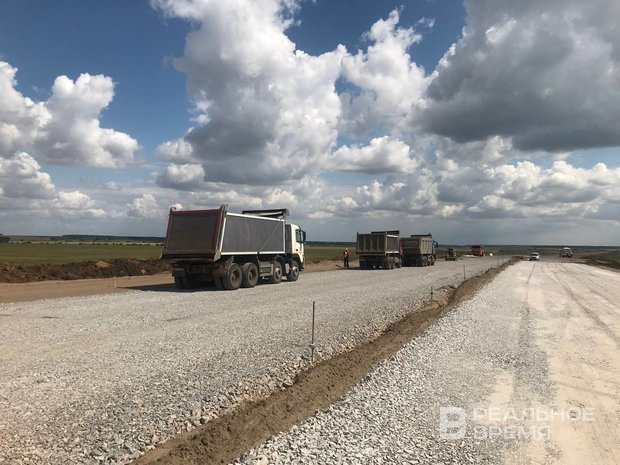‘The project has not been supported’: Tatarstan curtails strategy for development of transport system until 2030
The strategy for the development of the transport system has not found a positive response from the interested departments

As Realnoe Vremya found out, the sensational state programme for the development of the transport system of Tatarstan until 2030 has not been supported by the ministries concerned. The project, which became known in March of this year, assumed a seven-year development strategy, which implementation was estimated at half a trillion rubles. However, having failed to find approval and support, the authorities had to return to the previous programme, designed only until 2025. What changes await the transport infrastructure in the next two and a half years and what they are expected to lead to — in the material of Realnoe Vremya.
“Currently, draft resolution is under approval”
The new strategy for the development of the transport system of Tatarstan was a continuation of the previous programme “Development of the transport system of the Republic of Tatarstan for 2014-2025". It was assumed that, having passed the transitional 2022, it would fully enter into its legal force, having implemented measure worth almost 70 billion rubles in 2023. In general, it was planned to spend 453 billion on it by 2030. At the same time, the amount included not only funds from the republican and federal budgets, but also from extra-budgetary sources, as well as municipal road funds.
As for the previous year, the amount of funds allocated for the development of the transport system in the region reached almost 130 billion rubles. Most of them came from the federal budget — 71 billion. A little less — for the republican: 56 billion. 106 million were attracted from extra-budgetary funds, and 1,4 billion — from municipal road funds. In the same year, the budget of Tatarstan itself leads with a slight advance — 35 billion. It was planned to allocate 33 billion from the federal budget. At the same time, 622 million were attracted from extra-budgetary funds, and 1,3 billion from road funds.
The final results of the state programme, which was supposed to last until 2030, were considered three main points:
- increasing the share of regional and intermunicipal highways to 60%;
- increase in the proportion of settlements with paved roads to 84%;
- increase in the share of road network of urban agglomerations to 85,3%.
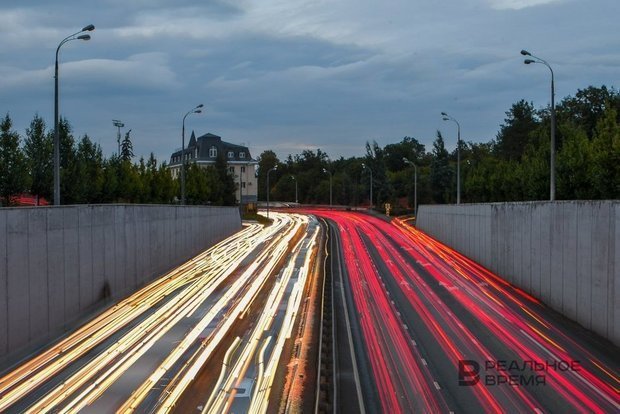
However, it was not destined to reach these values. As it became known to Realnoe Vremya, this month the authorities have again decided to consider the previous project, calculated until 2025, making all the necessary changes to it:
“In March 2023, it was decided to extend the state programme Development of the transport system of the Republic of Tatarstan for 2014-2025 until 2030. According to the results of consideration by the interested ministries, this draft resolution of the Cabinet of Ministers of Tatarstan has not been supported. In pursuance of the instruction of (of Prime Minister of Russia — ed.) Mikhail Mishustin on the transfer of state programmes of the subjects of the country to a new management system, the Ministry of Transport and Road Management of the republic has developed a draft resolution of the Cabinet of Ministers on amendments to the state programme “Development of the transport system of the Republic of Tatarstan for 2014-2025" in accordance with the developed methodological recommendations for the development of and implementation of state programmes of subjects and municipal programmes. Currently, the draft resolution is under approval," the press service of the Ministry of Transport of Tatarstan told Realnoe Vremya.
Four sets of events for 101 billion rubles
The state programme for the development of the transport system until 2030 was inextricably linked with the Development Strategy of Tatarstan, which is calculated until the same year. The amendments made to the previous — already current project — are also aimed at achieving its indicators. At the same time, they now look a little different:
- ensuring the share of the road network in the largest urban agglomerations at the level of at least 85%;
- increasing the share of regional highways in their total length to at least 50%.
The state programme itself is divided into two main stages, one of which has already been completed — from 2014 to 2023. As for the second one, it is calculated from 2024 to 2026, but the last year does not yet involve financing. Thus, in the next two years, more than 101,4 billion rubles will be allocated for the development of highways, bridges, interchanges, railways, river, and air transportation. Of these, 56,5 billion is planned to be spent next year, and 44,8 billion — in 2025.
Within the framework of this financing, four events will be implemented on the territory of the republic at once, whose costs are the following (from 2024 to 2025):
- The regional project “Metro development in Kazan” — 2 billion rubles.
- The regional project “Improvement, development and preservation of the highway network” — 81 billion rubles.
- The regional project “Improving the safety of the transport system” — 281 million rubles.
- The complex of process measures of the state programme “Development of the transport system of the Republic of Tatarstan” — 18 billion rubles.
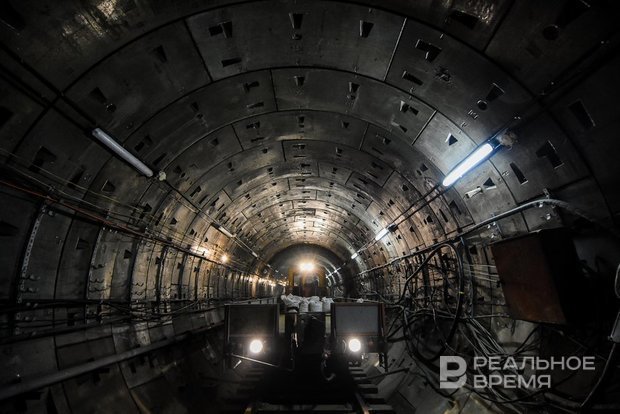
At the same time, the state programme predicts some indicators of the branches of the transport system themselves. Thus, as part of the implementation of its activities, the following values can be achieved by the end of next year:
- transportation of passengers by commuter rail — 6,2 million people;
- passenger turnover of suburban railway transport — 263,2 million passengers/km;
- transportation of goods by rail — 16,8 million tonnes;
- transportation of passengers by water transport — more than 360 thousand people;
- passenger turnover of water transport — 11,31 million passengers/km;
- passengers served by airports — 5,43 million people;
- cargo handled by airports — more than 4 thousand tonnes;
- transportation of passengers by buses — 304,5 million people;
- passenger turnover of buses — 1 794,8 million passengers/km;
- transportation of passengers by underground — 32,3 million people.
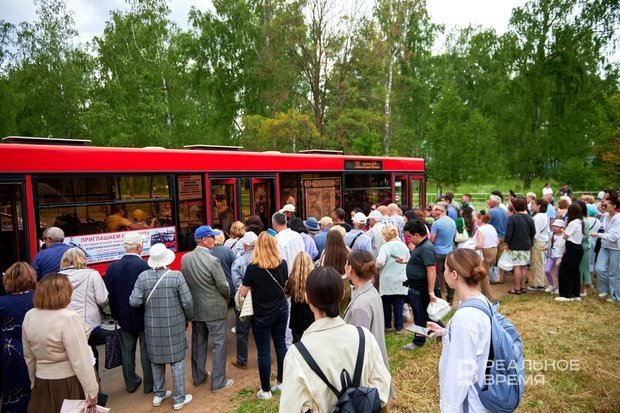
By the results of 2022, the share of the transport industry in the GRP of Tatarstan amounted to 5,2%
For Tatarstan, transport is one of the basic branches of the economy, as well as one of the most important components of the industrial and social infrastructure. This situation is due to that the republic is at the crossroads of the main transport routes:
- highways and railway lines running from east to west and connecting the Siberian regions, the Urals, Eastern Europe and western Russia;
- highways, railways, and river arteries running from south to north and connecting the Black Sea regions, the extended territory of the Volga region, Moscow and Leningrad regions.
The role of transport in the economy of the region is also evidenced by its significant share in the main production assets. Thus, by the results of the previous year, the gross regional product amounted to 3,865 trillion rubles, or 106% in comparable prices to the level of 2021. The share of gross value added of transport industry enterprises in GRP was estimated at 5,2%, which is by 0,6% higher than in 2021.
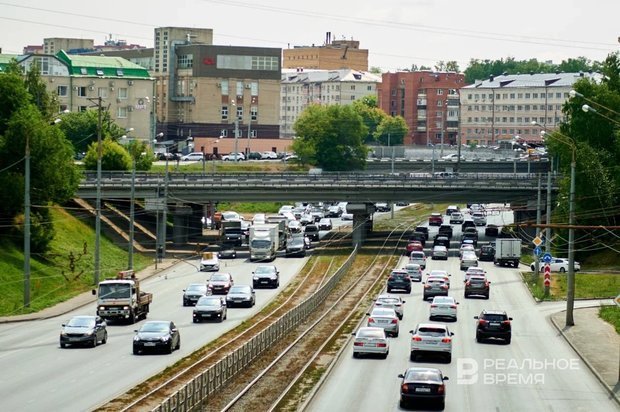
Transport projects in the republic contribute to the development of international corridors
Currently, a number of transport and transit system projects are being implemented in Tatarstan, which form international corridors running throughout the country. The updated state programme “Development of the transport system of the Republic of Tatarstan for 2014-2025" is to contribute to their speedy construction and full commissioning:
- Construction of the M7 Volga highway Moscow-Vladimir-Nizhny Novgorod-Kazan-Ufa on the bypass section of Nizhnekamsk and Naberezhnye Chelny. The project should solve the problem of congestion and disunity of the Zakamsky zone, where enterprises of petrochemistry, oil refining, automotive and other industries are concentrated.
- Reconstruction of the M7 Volga from the border of Chuvashia to the interchange at Innopolis, including the renovation of the bridge over the Sviyaga River at the 757th kilometre of the highway;
- Construction of the M12 Moscow-Nizhny Novgorod-Kazan, which should become a link between the network of high-speed highways located in the European part of Russia (M11, Central Ring Road, M3 Ukraine, M1 Belarus, M4 Don), with the largest regional centers PFD.
- The construction of the M12 bridge across the Volga, which will connect the Kazan and Kama economic zones. It will also connect the Innopolis SEZ with the enterprises of the Kama Innovative Territorial Production cluster.
- The construction of the Shali-Bavly highway, the project is aimed at the development of the international transport route Europe — Western China, and is also intended to connect the Kazan and Almetyevsk economic zones.
- The development of territories within the framework of the construction of the Alekseevskoye-Almetyevsk road, which should ensure the dynamics of housing construction in the republic in the gravity zone at the level of 719 thousand square metres until 2038.
